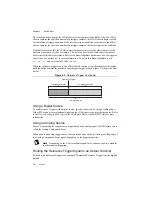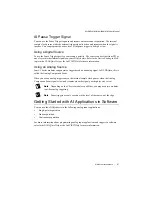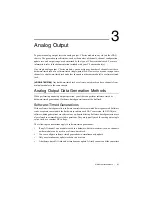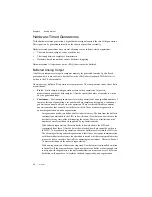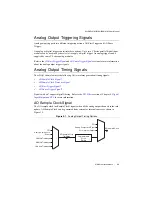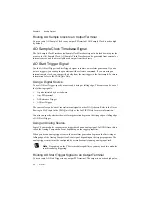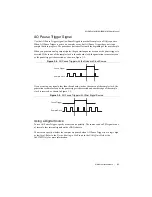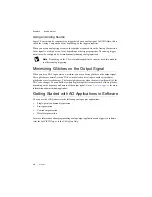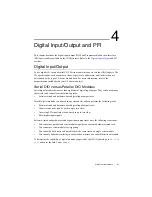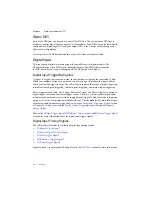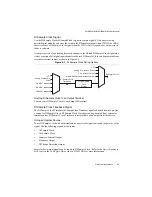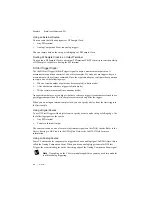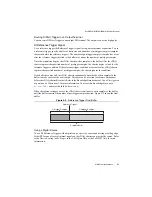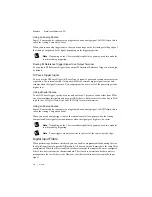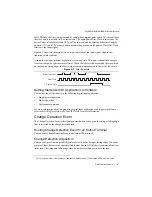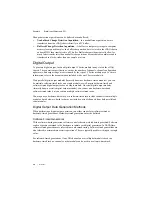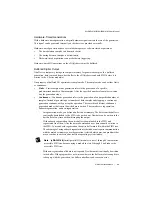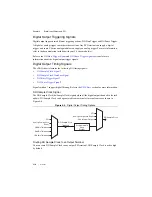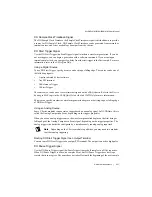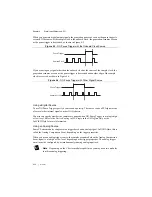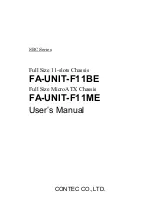
© National Instruments
|
4-7
NI cDAQ-9181/9184/9188/9191 User Manual
In NI-DAQmx, the filter is programmed by setting the minimum pulse width,
Tp
1
, that will pass
the filter, and is selectable in 25 ns increments. The appropriate Filter Clock is selected by the
driver. Pulses of length less than 1/2
Tp
will be rejected, and the filtering behavior of lengths
between 1/2
Tp
and 1
Tp
are not defined because they depend on the phase of the Filter Clock
relative to the input signal.
Figure 4-3 shows an example of low-to-high transitions of the input signal. High-to-low
transitions work similarly.
Assume that an input terminal has been low for a long time. The input terminal then changes
from low to high, but glitches several times. When the filter clock has sampled the signal high
on consecutive rising edges, the low-to-high transition is propagated to the rest of the circuit.
Figure 4-3.
Filter Example
Getting Started with DI Applications in Software
You can use the cDAQ chassis in the following digital input applications:
•
Single-point acquisition
•
Finite acquisition
•
Continuous acquisition
For more information about programming digital input applications and triggers in software,
refer to the
NI-DAQmx Help
or the
LabVIEW Help
for more information.
Change Detection Event
The Change Detection Event is the signal generated when a change on the rising or falling edge
lines is detected by the change detection task.
Routing Change Detection Event to an Output Terminal
You can route ChangeDetectionEvent to any output PFI terminal.
Change Detection Acquisition
You can configure lines on parallel digital modules to detect rising or falling edges. When one
or more of these lines sees the edge specified for that line, the cDAQ chassis samples all the lines
in the task. The rising and falling edge lines do not necessarily have to be in the task.
1
Tp
is a nominal value; the accuracy of the chassis timebase and I/O distortion will affect this value.
Digit
a
l Inp
u
t P0.
x
Filter Clock
Filtered Inp
u
t
1
1
2
1
1
2
1

